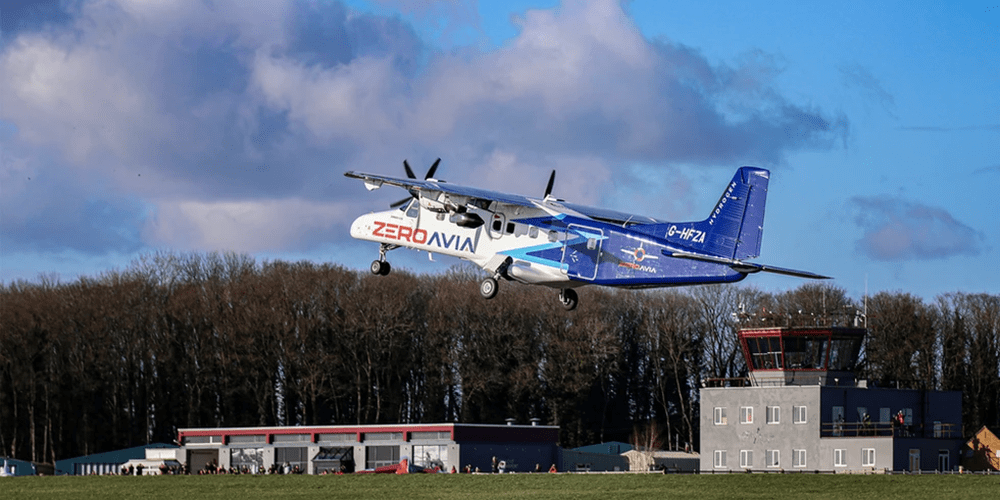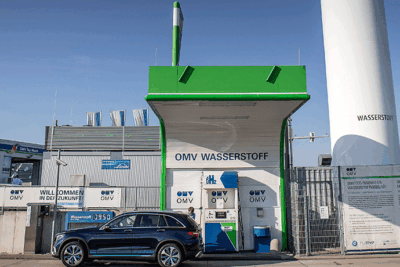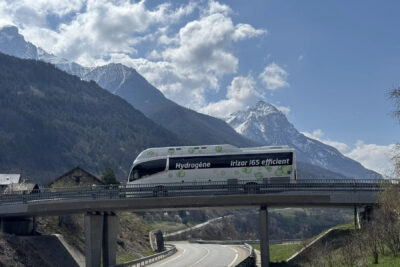ZeroAvia hydrogen-electric aircraft takes off for testing
ZeroAvia, an electric aircraft propulsion specialist, has achieved the next milestone as the company announces the maiden flight of its testbed hydrogen aircraft HyFlyer II. The plane took off from Cotswold Airport in England and remains the world’s largest hydrogen-electric aircraft.
This is according to ZeroAvia, which has been working on Project HyFlyer II since 2021. To demonstrate the viability of hydrogen-electric flight, the company is using a Dornier 228 aircraft. Usually, a twin-engine turboprop built by the German manufacturer Dornier between 1981 and 1998, the HyFlyer II version will have two 600 kW units mounted on the wings in place of the turbines. In future, hydrogen tanks will store up to 100 kilograms of compressed hydrogen.
However, this week’s maiden flight saw the testbed Dornier taxiing, launching and landing with the help of just one retrofitted prototype hydrogen powertrain on the aircraft’s left wing. It operated alongside a single Honeywell TPE-331 stock engine on the right.
As for power, the latest testing configuration comprises two fuel cell stacks. Lithium-ion battery packs provide peak power support during take-off, adding additional redundancy for safe testing, says Zero Avia. The hydrogen tanks and fuel cell systems were housed inside the cabin. In a commercial configuration, external storage would be used and the seats restored.
The test flight took place from the company’s R&D facility at Cotswold Airport and lasted ten minutes. ZeroAvia called it a “landmark flight” within its R&D operations backed by the UK Government’s ATI Programme, which targets developing a 600kW zero-emission powertrain to support 9-19 seat aircraft.
All systems performed as expected, and ZeroAvia stressed this was their largest engine tested to date and placed the company on “the direct path to a certifiable configuration to be finalised and submitted for certification in 2023”.
ZeroAvia targets a 300-mile range in the 19-seater aircraft entering commercial operations by 2024 and up to a 700-mile range in 40-80 seat aircraft by 2026. Today the company added a 2-5 MW powertrain programme was underway to scale the technology for up to 90-seat aircraft, with further expansion into narrowbody aircraft demonstrators over the next decade.
The company runs a second facility and prototype plane in the US and has garnered a range of support overseas. The International Airlines Group (IAG) has been an investor since 2020, and their initial commitment also included United and Alaska Airlines. The Amazon Climate Pledge Fund, AP Ventures, Breakthrough Energy Ventures, Horizons Ventures, Summa Equity and Shell Ventures are among the remaining early investors, with American Airlines coming on board in August 2022, as reported.
American Airlines has already ordered the future engine from ZeroAvia. The company also announced new infrastructure partnerships with OEM Textron Aviation and airports, including Rotterdam, Edmonton International and AGS Airports. With 1,500 systems on pre-order, ZeroAvia says it was “well positioned to lead the industry’s transformation to a clean future”.





0 Comments